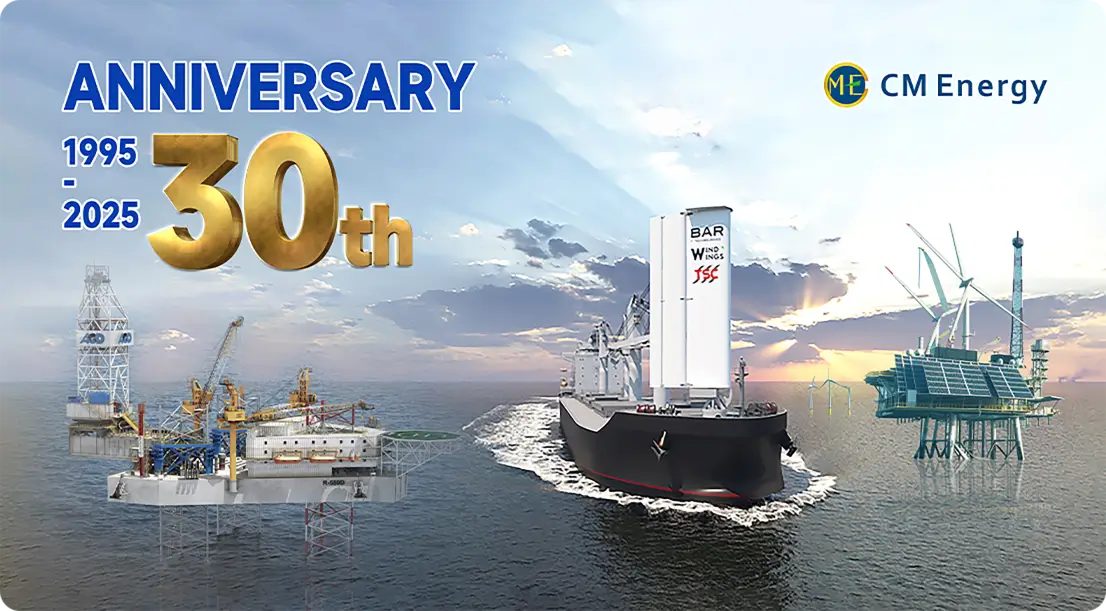LNG Fuel Tank-to-Engine Conveyance Network
HP FGSS Exclusively engineered for MAN GI engines, this LNG Fuel Tank-to-Engine Conveyance Network system utilizes PVU technology to enhance LNG pressure above 300 bar, resulting in methane emissions approximately 90% lower than those of MAN GA engines. The LP FGSS variant is designed for Otto-cycle gas engines and operates under pressures of 16 bar. To ensure comprehensive gas management, the system can integrate both a gas combustion unit (GCU) and a gas boiler to efficiently manage boil-off gas (BOG).
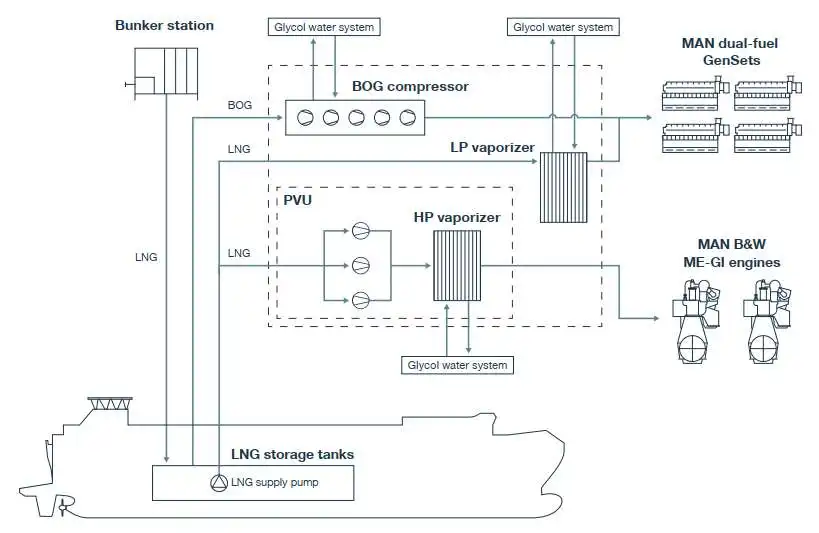
Why Choose Us?
1. Specialization at the Forefront of the Industry – Our profound expertise in dual-fuel vessels, LNG carriers, and chemical tankers allows us to provide unmatched engineering solutions.
2. Comprehensive System Capabilities – We offer a diverse portfolio that includes Methanol (MFSS), LNG (FGSS), Ammonia (AFSS) fuel systems, as well as LPG cargo handling (CHS) solutions.
3. Excellence in Innovative Engineering – Our field-tested LNG Fuel Tank-to-Engine Conveyance Network showcase operational stability over an entire year, enhanced by tailored Tank Cooling System (TCS) equipment designed for space efficiency and safety optimization.
4. Collaborative Technology Partnerships – In collaboration with the Norwegian design leader WTC, we offer state-of-the-art, client-focused solutions.
5. Support Throughout Product Life Cycle – Our services encompass everything from conceptual design to installation, including multi-unit project execution and dedicated aftermarket support.
Product Specifications
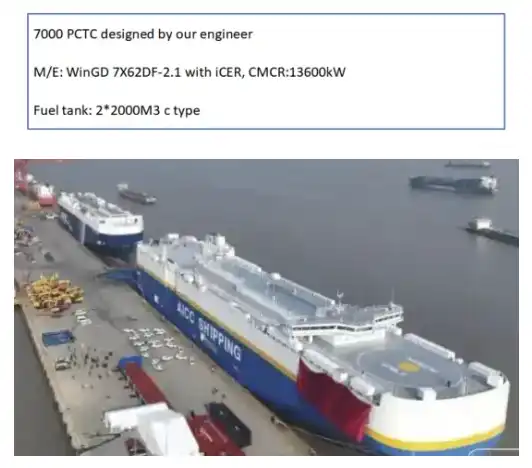
Product Overview
1. Efficient MAN-GI Solution – With PVU-driven pressurization exceeding 300 bar, methane slip is reduced to just 10% of GA engine levels, merging performance with environmental standards.
2. Otto-Cycle Configuration Optimization – The compact LNG infrastructure within TCS guarantees safe operations below 16 bar for gas-fired engines.
3. Gas Recovery Integration – By integrating GCU and boiler functionalities, complete utilization of BOG is achieved, significantly reducing energy loss.
4. Confirmed Performance – LP systems demonstrate continuous vessel operation surpassing 12 months.
5. Pre-Engineered Modular Solutions – Tanks integrated with TCS and pre-assembled components provide secure, space-efficient turnkey options.
6. Smooth Implementation Process – Comprehensive assistance is available from system design through to operational handover, supported by ongoing technical service.
Quality Assurance
We are certified to CCS standards for 72.3m³ stainless steel double-layer LNG containment systems.
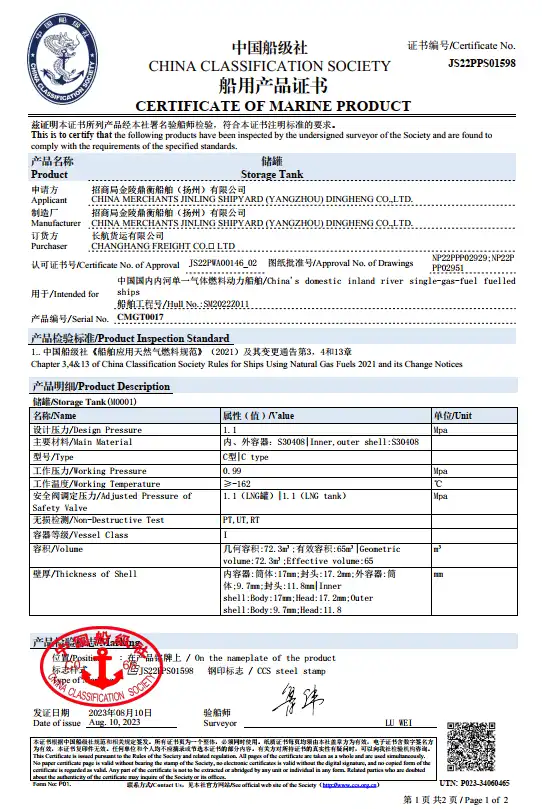
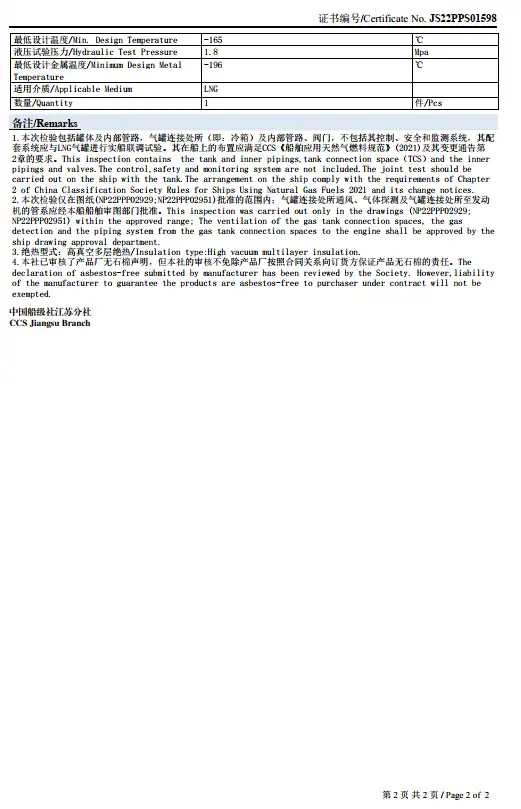
Installation Procedure
1. Conduct a detailed review of the vessel's design documentation prior to installation to ensure all system interface requirements are confirmed through technical verification.
2. Assemble all necessary tools and safety equipment, establishing proper safety protocols before commencing work.
3. Utilize suitable lifting machinery to position the pre-assembled fuel supply module accurately in the designated installation area.
4. Securely anchor the module to its base, ensuring compliance with the vessel’s structural and design specifications while maintaining stability.
5. Install all connections—transfer pipelines, auxiliary piping networks, and control cabling—ensuring each connection is verified for leak-tightness and electrical functionality.
6. Verification of the system involves both component-level testing and comprehensive integrated testing to confirm performance across all operational aspects, encompassing bunkering processes, supply functions, and safety control mechanisms.
For more product information about LNG Fuel Tank-to-Engine Conveyance Network, please leave a message below
